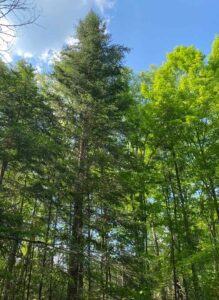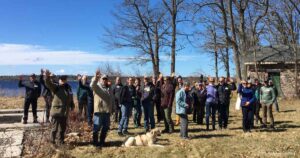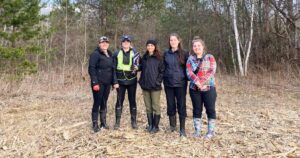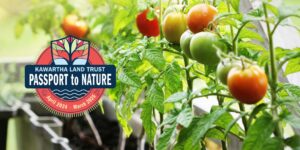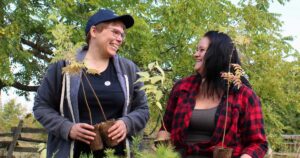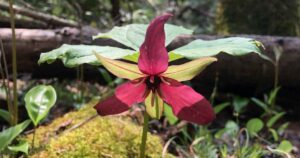An important goal in land protection is habitat restoration. This is the process of restoring altered land to health. There are a lot of steps to a successful restoration project.
KLT Canadian Conservation Corps interns, Lexi and Veronica, love getting an insider look at the process!
They are doing restoration work at the McKim-Garsonnin (Ballyduff trails) property. Veronica appreciates learning some of the tools. She has been using ArcGIS for mapping the area. Bird apps also help in recognizing bird calls. Now birding by ear doesn’t seem like such an impossible task!
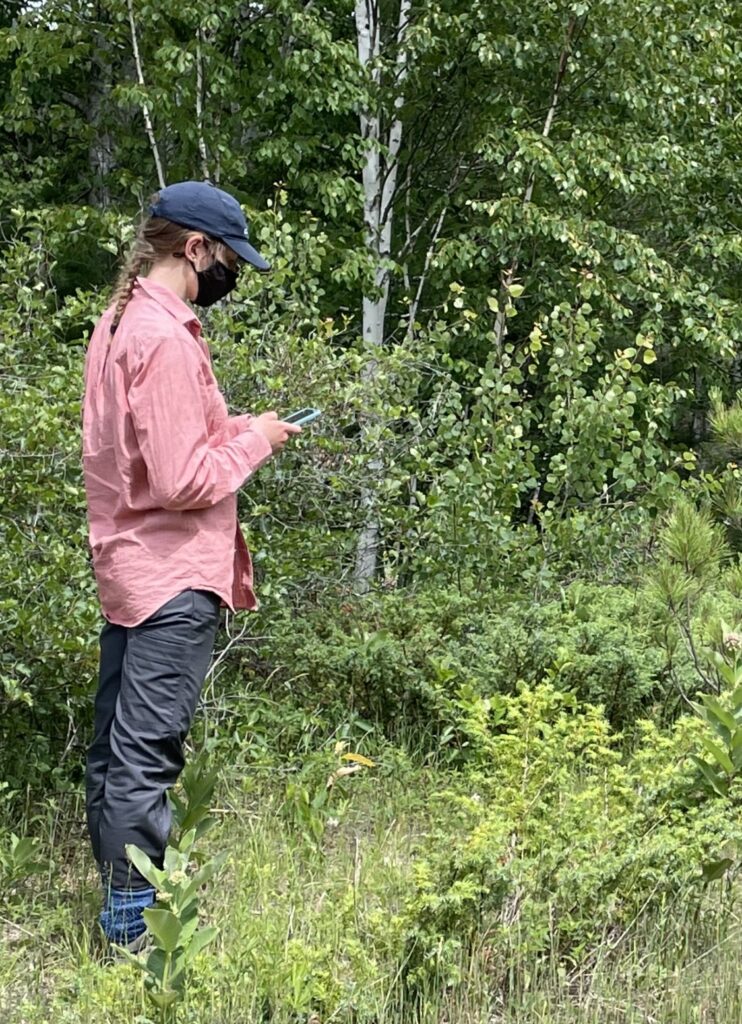
With this information, Lexi and Veronica are now learning to prepare management plans. The plans list all the actions and resources needed to carry out the restoration. At the McKim-Garsonnin property, the removal of invasive trees is a high priority. This opens up some space for the tallgrass prairie. Today, tallgrass prairie ecosystems make up less than 1 per cent of the area they covered in Ontario. What’s left needs to be protected and expanded.
Other areas on the property need different actions such as tree planting to create new forest stands. Similar to what they did earlier in the season at John Earl Chase Memorial Park. There the whole team planted 1,600 tree saplings over two days! A lot of Red Oak, Burr Oak, and White Pine are now creating a new level of species diversity. Lexi believes this type of species diversity is important in restoration work. Scots Pine and Turfgrass, for example, are both great at creating monocultures. But for ecosystems to thrive, many different types of native species need to interact.
They continue to check the results of their work. They find it thrilling to see positive results – like the growth of tree saplings! This motivates them to continue their hard work of adding biodiversity to KLT properties.

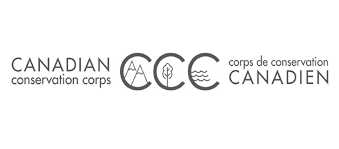
Posted August 4, 2021.



